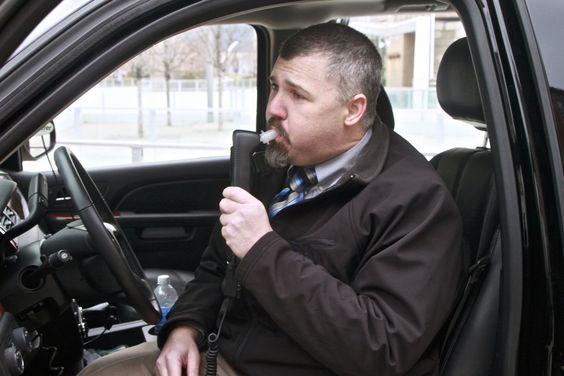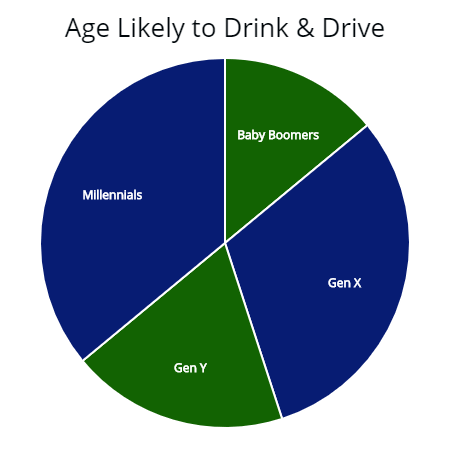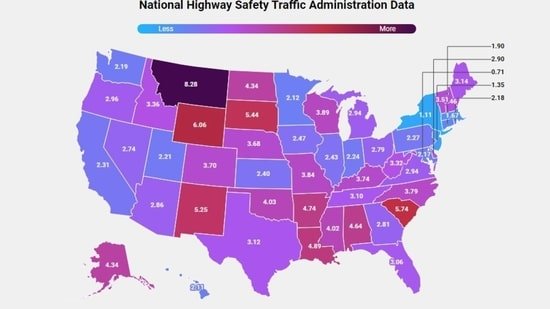Understanding Ignition Interlock Devices – How They Function
Free Car Insurance Comparison
Compare Quotes From Top Companies and Save
Secured with SHA-256 Encryption
Tim Bain
Licensed Insurance Agent
Tim Bain is a licensed insurance agent with 23 years of experience helping people protect their families and businesses with the best insurance coverage to meet their needs. His insurance expertise has been featured in several publications, including Investopedia and eFinancial. He also does digital marking and analysis for KPS/3, a communications and marking firm located in Nevada.
Licensed Insurance Agent
UPDATED: Jun 22, 2022
It’s all about you. We want to help you make the right coverage choices.
Advertiser Disclosure: We strive to help you make confident auto insurance decisions. Comparison shopping should be easy. We are not affiliated with any one auto insurance provider and cannot guarantee quotes from any single provider. Our partnerships don’t influence our content. Our opinions are our own. To compare quotes from many different companies please enter your ZIP code on this page to use the free quote tool. The more quotes you compare, the more chances to save.
UPDATED: Jun 22, 2022
It’s all about you. We want to help you make the right coverage choices.
Advertiser Disclosure: We strive to help you make confident auto insurance decisions. Comparison shopping should be easy. We are not affiliated with any one auto insurance provider and cannot guarantee quotes from any single provider. Our partnerships don’t influence our content. Our opinions are our own. To compare quotes from many different companies please enter your ZIP code on this page to use the free quote tool. The more quotes you compare, the more chances to save.
On This Page
You can count on getting an ignition interlock device after your first DUI conviction in most states.
How many states require ignition interlocks after a DUI?
All 50 states have ignition interlock laws, state regulations, and 28 require IID’s for all DUI offenses.
In many states, drivers convicted of their first drunk driving offense with a BAC (breath alcohol concentration) over 0.08 are mandated to have the device installed in their motor vehicle for public safety reasons.
The states are:
| Alabama | New Hampshire |
| Alaska | New Mexico |
| Arkansas | New York |
| California | Oklahoma |
| Colorado | Oregon |
| Delaware | Rhode Island |
| Hawaii | Tennessee |
| Iowa | Texas |
| Louisiana | Vermont |
| Maryland | Virginia |
| Mississippi | Washington |
| Nebraska | Washington D.C. |
| Nevada | West Virginia |
The installation of the safety device happens as a requirement from the courts or some other monitoring authority regarding public safety.
The following professionals can issue an order to require you to get a standard device BAIID in your vehicle:
– A judge/court
– A probation officer
– The DMV department
Free Auto Insurance Comparison
Enter your ZIP code below to view companies that have cheap auto insurance rates.
Secured with SHA-256 Encryption
What is an ignition interlock device?
An ignition interlock device (IID) is a handheld breathalyzer device.
Or it could be called a BAIID or breath alcohol ignition interlock device.
Common ones used are Intoxalock and Draeger.
The device is sometimes called “blow and go,” and it measures the alcohol levels on the user’s breath sample.
BAIID’s usually include a handheld unit, a mouthpiece, a cord, and other compliance items that connect to your vehicle.
Depending on law enforcement or state regulations, they may also include a camera unit.
The device is designed to prevent drivers from drinking and driving.
First-time offenders often have it installed in their car to prevent a subsequent offense and to keep the driver’s eligibility status.
And to guarantee that drivers remain sober when behind the wheel.
If you are required to use it following a DUI conviction, you will not be able to install an approved interlock system yourself.

Illustrated above is someone using a standard equipment IID in a vehicle to be able to start it. What blood alcohol level (BAC) will it work and start the vehicle? No higher than .02 alcohol set point. If you blow higher, the car won’t start. If you blow four or five times above the .02 alcohol set point, you have to get the BAIID recalibrated to work again and start your car. Image credit: Packlawgroup.com
In most cases, the court or DMV in your area will have an agreement with a state-certified compliance service center to install, do the periodic calibration, and eventually remove your device.
If you have been ordered by the court to install it in your car, you must go through the installation.
Failing to install a court-ordered IID could lead to additional costly penalties.
How does a BAIID work?
BAIID’s are installed in your vehicle with a pre-set blood alcohol limit.
If the device detects a BAC (blood alcohol concentration) over the legal limit, the vehicle will not start.
Or a set point such as .02 BAC.
If you have one installed in your vehicle, you’ll need to breathe into the device’s mouthpiece before starting the vehicle.
As long as the BAC measured is below the device’s pre-set limit, your car will start and be ready to drive.
The installed IID is designed to re-check your BAC even after you start your vehicle.
Below are the types of BAIID’s and how often they do a breath test:
| Device | Test on start | 6 minutes of driving* | 30 minutes |
|---|---|---|---|
| Standard IID | Yes | Yes | Yes |
| IID with camera | Yes | Random | Yes |
| IID with GPS | Yes | Yes | Yes |
*All IID’s require you to blow before starting your vehicle. You will get a randomized breath test or rolling retest while driving from 6 to 30 minutes.
This feature helps prevent drivers from having another person or family member blow into the device to start the vehicle.
These retests happen at random times while you drive and allow for a four to six-minute window.
This window is designed to allow you to pull over to conduct the breathalyzer test safely.
While there are various devices from interlock manufacturers, they are all rather easy to use.
What methods do Interlocks use?
Regardless of the manufacturer, most interlock devices use one of three methods for submitting breath samples.
The first method is known as blow-inhale-blow.
It is the most accurate of the three, most widely used, and has high reliability.
If you get one that uses this method, you will submit your breath sample by blowing into the mouthpiece for two seconds.
Without taking your mouth off the mouthpiece, you should inhale back in for two seconds and then blow into the mouthpiece one more time for two seconds.
| Blow-Hum | The blow-hum test requires the user to blow into the mouthpiece for a couple seconds, then transition into a hum. You will hear a click sound when the test is over. |
| Blow | Take a deep breath and blow continuously until you hear the clicking sound from your device. |
| Hum | Produce a humming sound steadily into the device during your test until you hear the clicking sound. |
The other two methods for submitting a breath sample are not as common, and probably for a good reason.
One of the two methods, the straight blow breath method, requires the user to blow a powerful breath sample for up to 7 seconds.
This method is considered to be unreliable.
And most people find it difficult to blow hard enough to submit a normal test.
The other method, known as the blow and hum method, is difficult to do.
The complicated procedure of blowing hard and humming at the same time has caused many drivers to deal with accidental lockouts.
If you face a DUI conviction, you will be mandated by the state to have an alcohol ignition device that uses one of the breath sample submission methods.
While I recommend the first of the three based on its accuracy and ease of use, it is worth seeing which one works best for you.
Free Auto Insurance Comparison
Enter your ZIP code below to view companies that have cheap auto insurance rates.
Secured with SHA-256 Encryption
Why are ignition interlock devices mandatory in so many states?
The research shows that BAIID’s help prevents repeat a subsequent offense.
As a result, the interlock system saves lives.
In fact, it is estimated that at least 800 lives per year are saved thanks to interlock vendors and according to the department of the CDC.gov.
What are the benefits of an ignition interlock device?
It cannot be stated enough that ignition interlock requirements save lives by preventing repeat DUI offenses.
In fact, they are proven to be more effective than other measures, such as suspending the driver’s license of offenders.
Collected data shows that nearly 75% of drivers with suspended licenses continue to drive during their suspension period.
 Illustrated is the generation of drivers likely to drink and drive. Gen X and Millennials are two age groups likely to drink and drive above the legal limit more often than Baby Boomers or Gen Y. Over 30% of drivers from Gen X and Millennials have admitted to drinking and driving.
Illustrated is the generation of drivers likely to drink and drive. Gen X and Millennials are two age groups likely to drink and drive above the legal limit more often than Baby Boomers or Gen Y. Over 30% of drivers from Gen X and Millennials have admitted to drinking and driving.
Many of those drivers become repeat DUI offenders, putting themselves and others in danger.
That is why starter systems are a far better deterrent of drinking and driving than a restricted license or using their driver’s license number.
While preventing a repeat offense may be the biggest and most important benefit, there are additional reasons why BAIID’s are a positive solution to the drinking and driving problem.
Because interlock devices help reduce repeat offenders, they make it possible for those with a DUI conviction to maintain their legal driving privilege.
For that reason alone, getting an interlock vendor is probably the most affordable punishment for a DUI conviction.
It is less costly than the fines, penalties, and additional costs with a suspended or restricted license number.
You won’t actually be required to purchase it.
Instead, you will be able to rent or lease one for the time that you need it.
How much does a breath alcohol ignition cost?
On average, you can expect to pay between $60 and $90 per month for as long as the device is installed in your car.
Additionally, according to Madd.com, the device’s installation will set you back $70 to $100.
How does an ignition interlock device impact my insurance?
If you’re in a situation when an IID must be installed in your vehicle, it means you’ve been convicted of a DUI.
That DUI conviction alone is going to impact your insurance premium and policy.

Illustrated above is the amount of DUI fatalities by state. Purple illustrating the states with the most fatalities per capita and blue with less. Department legislatures get data from NHTSA to implement laws requiring drivers to use an IID after a conviction.
If you recently had a DUI conviction hit your driving record, you’ll see a significant rate hike.
And a certain limit on your driving privilege.
You will likely only qualify for high-risk car insurance that requires an SR-22 to be filed by your provider.
It is unlikely that the mandatory installation of an IID will have any impact on your car insurance.
That is because of the DUI conviction that made the device mandatory limits your auto insurance options.
If you decide to voluntarily install an IID in your vehicle without any DUI conviction, you may receive a discount on your insurance.
Some insurance companies may consider it a traffic safety device.
Insurance companies often give discounts for safety devices installed in vehicles.
However, you should contact your insurance company before deciding to install any ignition system voluntarily.
To see if that’s the correct way to make an informed decision before getting an IID program application or going to a certified service center.
Free Auto Insurance Comparison
Enter your ZIP code below to view companies that have cheap auto insurance rates.
Secured with SHA-256 Encryption
Do IID’s lockout a lot of drivers?
Although ignition interlock requirements may seem like a burden for those ordered to use them, they serve a legitimate purpose.
Plus, they ultimately save the lives of countless drivers.
Perhaps the biggest concern related to these devices is that drivers might get locked out of their vehicles.
A lockout results in the driver not being able to start their vehicle.
As concerning as that sounds, lockouts can be easily avoided.
The two most common causes for device lockouts are missed calibration appointment and failing too many sample breath tests.
Most states require them to be calibrated from time to time.
Depending on the interlock manufacturer, your device will let you know when it is time to be calibrated.
Can you cheat an Ignition Interlock?
When IID’s were first introduced to the market, it wasn’t uncommon to hear about people trying to “cheat” or “game” their device.
Or having a family member blow into it for them.
However, the devices have advanced quite a bit since first being introduced.
With mechanisms like the random retest feature, it is a lot harder, if not impossible, to cheat one of these devices.
Additionally, any attempts to tamper with the device could cause damage that will cost you more than a thousand dollars in fees.
It shouldn’t even have to be said but attempting to tamper with or cheat interlock devices isn’t worth it.
Are the devices an inconvenience?
As inconvenient as the interlock system may seem to drivers, they have proven to be an effective way to reduce repeat drinking and driving privileges.
An interlock system helps keep other drivers safe and helps you avoid penalties and fines.
Plus, the mortal dangers associated with drinking and driving.
Although IID’s are somewhat costly, the alternatives are much harsher on your wallet both in the short and long term.
Can you avoid using an ignition interlock?
Clearly, the easiest way to avoid an IID is not to drink and drive.
Ask a family member or call an UBER to get you home.
However, if you are looking at a driving under the influence conviction, having one of these temporary in-car breathalyzers installed in your vehicle is the quickest way to get back on the road safely.
Then get your suspension notice lifted and your driver’s license reinstatement form.
And of course, legally.
Sources
https://www.federalregister.gov/
Intoxalock.com
Draeger
{“@context”:”https://schema.org”,”@type”:”FAQPage”,”mainEntity”:[{“@type”:”Question”,”name”:”How many states require ignition interlocks after a DUI?”,”acceptedAnswer”:{“@type”:”Answer”,”text”:”All 50 states have ignition interlock laws, and 28 require IID’s for all DUI offenses. In many states, drivers convicted of their first DUI offense with a BAC over 0.08 are mandated to have an ignition interlock device installed.”}},{“@type”:”Question”,”name”:”What is an ignition interlock device?”,”acceptedAnswer”:{“@type”:”Answer”,”text”:”An ignition interlock device (IID) is a handheld breathalyzer device. The device is sometimes called “blow and go” and it measures the amount of alcohol on the user’s breath. IID’s usually include a handheld unit, a mouthpiece, and a cord that connects it to your vehicle. Depending on the laws in your state, they may also include a camera.”}},{“@type”:”Question”,”name”:”How does an IID work?”,”acceptedAnswer”:{“@type”:”Answer”,”text”:”IID’s are installed in your vehicle with a pre-set blood alcohol limit. If the device detects a BAC (blood alcohol concentration) over that set limit, the vehicle will not start. If you have an interlock device installed in your vehicle, you’ll need to breathe into the device’s mouthpiece prior to starting the vehicle. As long as the BAC measured is below the device’s pre-set limit, your car will start and be ready to drive.”}},{“@type”:”Question”,”name”:”Why are ignition interlock devices mandatory in so many states?”,”acceptedAnswer”:{“@type”:”Answer”,”text”:”The research shows that IID’s help prevent repeat DUI offenses. As a result, these devices save lives. In fact, it is estimated that at least 800 lives per year are saved thanks to interlock devices according to CDC.gov. “}},{“@type”:”Question”,”name”:”How much do ignition interlocks cost?”,”acceptedAnswer”:{“@type”:”Answer”,”text”:”On average, you can expect to pay between $60 and $90 per month for as long as the device is installed in your car. Additionally, installation of the device will set you back $70 to $100, according to Madd.com”}}]}

Free Auto Insurance Comparison
Enter your ZIP code below to view companies that have cheap auto insurance rates.
Secured with SHA-256 Encryption
Tim Bain
Licensed Insurance Agent
Tim Bain is a licensed insurance agent with 23 years of experience helping people protect their families and businesses with the best insurance coverage to meet their needs. His insurance expertise has been featured in several publications, including Investopedia and eFinancial. He also does digital marking and analysis for KPS/3, a communications and marking firm located in Nevada.
Licensed Insurance Agent
UPDATED: Jun 22, 2022
It’s all about you. We want to help you make the right coverage choices.
Advertiser Disclosure: We strive to help you make confident auto insurance decisions. Comparison shopping should be easy. We are not affiliated with any one auto insurance provider and cannot guarantee quotes from any single provider. Our partnerships don’t influence our content. Our opinions are our own. To compare quotes from many different companies please enter your ZIP code on this page to use the free quote tool. The more quotes you compare, the more chances to save.


